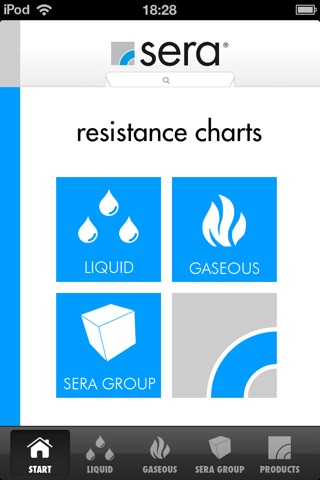
sera app for iPhone and iPad
Developer: KAROTKY Media Solutions
First release : 07 May 2012
App size: 16.39 Mb
sera (Chemical Resistance Charts) - The unique resistance list App from sera
sera is an app made by the sera group (sera GmbH, sera ProDos GmbH, sera ComPress GmbH), which is based on resistance charts
to inform on the resistance of various materials against many different
liquid and gaseous chemicals. The choice of media and materials aims specifically
at the needs in mechanical and plant engineering with a focus on dosing, feeding and
compressor technology. As a leading supplier of system solutions in this area,
sera wants to offer a quick and easy overview about the resistance of relevant
materials to all planners, engineers, purchasers and interested persons.
The following materials were considered in the resistance charts:
PVC-U, PVC transparent, PP, PP-GFK, PE, PVDF, PVDF-GFK, EPDM, CSM, FPM, PTFE, PTFE-faced, FEP-covered, copper, brass, cast iron, 1.4571/1.4581, 1.4305/1.4104, 14.401, 1.4122v, Glas
Important note!
Resistance of materials is also dependant on other factors, e.g. operating conditions,
conditions of surface etc., and so this chart must be treated as an initial guide only.
It cannot claim to offer any guarantees. sera does not guarantee the accuracy of the information and
assumes no liability for any damages or losses incurred in connection with the use of the sera resistance chart.
It should be taken into conderation in particular that unusual dosing media are compounds
for the most part, and their corrosiveness cannot be deducted simply by adding the corrosiveness
of each single component. In such cases the chemical producer‘s data of the material compatibility
are to be conisdered as a matter of prime importance for the material choice. A safety data sheet
does not give these data and therefore cannot take the place of the technical documentaion on
the application.
The data has been taken from public sources, relevant manufacturer‘s documentation and our own tests. The hazardous materials identification was performed according to the Globally Harmonized System (GHS) for the EU.



